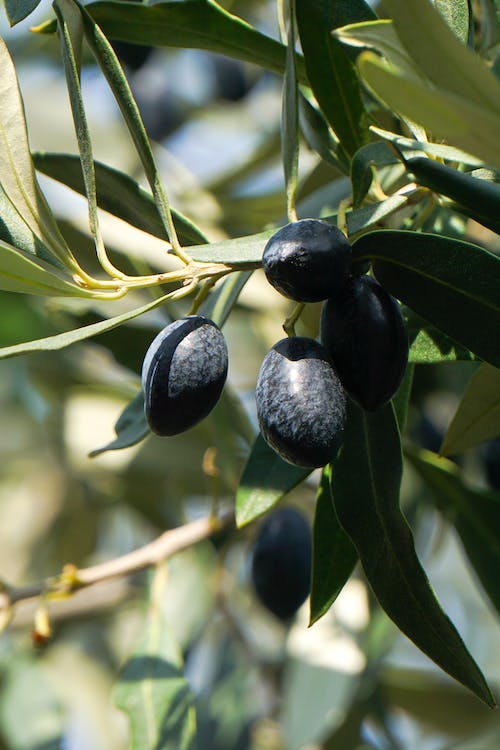Mediterranean Food Forest
A comprehensive guide to growing a food forest in the Mediterranean climate
I. Introduction
- Definition of a Food Forest
- Benefits of a Food Forest
- Why a Mediterranean Food Forest
II. Understanding the Mediterranean Climate
- Geographical location of Mediterranean Climate
- Characteristics of Mediterranean Climate
- Importance of understanding the climate for gardening
III. Designing a Mediterranean Food Forest
- Size and shape of the garden
- Soil preparation
- Choosing the right plants
- Plant spacing and arrangements
IV. Plant Selection
- Edible Trees
- Olive Trees
- Fig Trees
- Almond Trees
- Edible Shrubs
- Rosemary
- Sage
- Thyme
- Edible Perennials
- Artichoke
- Asparagus
- Rhubarb
- Edible Annuals
- Tomatoes
- Squash
- Cucumbers
V. Planting and Maintenance
- Soil preparation and fertilization
- Planting techniques
- Watering and Irrigation
- Pruning and maintenance
VI. Conclusion
- Recap of the main points
- Final thoughts
- Additional resources


Introduction:
Food forests are a type of agriculture system that mimics the structure and function of a natural forest. They consist of a diverse range of food-producing trees, shrubs, perennials, and annuals, arranged in a way that creates a self-sustaining ecosystem. A Mediterranean Food Forest is designed to thrive in the Mediterranean climate, which is characterized by mild, wet winters and hot, dry summers. This type of food forest is an excellent option for gardening enthusiasts who live in Mediterranean climates, as it provides a bountiful supply of fresh, healthy food for years to come.
In this book, we will explore the benefits of planting a Mediterranean Food Forest, how to design and plant one, and which specific plants to include. Whether you are a seasoned gardener or just starting out, this book provides all the information you need to create a successful Mediterranean Food Forest.
Understanding the Mediterranean Climate:
The Mediterranean climate is found in several countries around the Mediterranean Sea, including Spain, Italy, Greece, and parts of California. This climate is characterized by mild, wet winters and hot, dry summers, with temperatures ranging from 40-80°F (5-27°C) in the winter and 60-100°F (15-38°C) in the summer. This climate is ideal for many edible plants, including olive trees, fig trees, and almond trees.
To successfully plant a Mediterranean Food Forest, it is important to understand the unique conditions of the climate and how it affects the growth of plants. For example, the hot, dry summers in a Mediterranean climate can cause soil to dry out quickly, so it is important to choose plants that are drought-tolerant and can survive without frequent watering. Additionally, the mild, wet winters can cause soil to become waterlogged, so it is important to choose plants that can tolerate wet soil conditions.
Designing a Mediterranean Food Forest:
The first step in planting a Mediterranean Food Forest is to determine the size and shape of your garden. The size of the garden will depend on the amount of space you have available and how many plants you want to include. The shape of the garden can be anything from a simple rectangle to a more complex design, depending on your preferences.
Once you have determined the size and shape of the garden, the next step is to prepare the soil. This may involve amending the soil with compost or other organic matter, or adding drainage material if the soil is heavy or compacted. It is also important to assess the sun exposure of the garden, as some plants prefer full sun while others prefer partial shade.
When designing your Mediterranean Food Forest, it is important to consider the different levels of the garden. The tallest trees, such as olive trees and almond trees, should be planted at the back of the garden, while shorter shrubs, such as rosemary and thyme, can be planted in the middle. Edible perennials, such as artichokes and asparagus, can be planted in the front of the garden, and annual vegetables, such as tomatoes and cucumbers, can be rotated in and out of the garden each year.
Plant Selection:
When selecting plants for a Mediterranean Food Forest, it is important to choose species that are well-suited to the climate and soil conditions. Some of the best edible trees for a Mediterranean Food Forest include olive trees, fig trees, and almond trees. Olive trees are a popular choice for a Mediterranean Food Forest, as they are drought
tolerant and provide a source of delicious olive oil. Fig trees are another great option, as they produce sweet and juicy figs that are a staple in many Mediterranean dishes. Almond trees are also a good choice, as they produce sweet, nutty almonds that can be used in baking, cooking, or eaten as a snack.
Shrubs that are well-suited to a Mediterranean Food Forest include rosemary, thyme, and lavender. These plants are drought tolerant, easy to care for, and provide a range of flavors and aromas that can be used in cooking. They also attract beneficial insects, such as bees and butterflies, to the garden.
Edible perennials that are well-suited to a Mediterranean Food Forest include artichokes, asparagus, and fennel. These plants provide a source of fresh, healthy food for years to come and require minimal care. They also have a low impact on the environment, as they do not need to be replanted each year.
Annual vegetables that are well-suited to a Mediterranean Food Forest include tomatoes, cucumbers, and peppers. These plants provide a bountiful harvest of fresh vegetables each year and can be rotated in and out of the garden to keep the soil healthy.
In addition to the plants mentioned above, it is also important to include ground covers, such as clovers and nitrogen-fixing plants, in your Mediterranean Food Forest. These plants help to conserve moisture in the soil and provide a source of organic matter, which helps to improve soil health.
Planting and Maintenance:
Once you have selected the plants for your Mediterranean Food Forest, the next step is to plant them. It is important to plant the taller trees at the back of the garden, the shrubs in the middle, and the perennials and annuals in the front of the garden. When planting, it is important to follow the instructions on the plant label, as some plants may need to be spaced farther apart than others.
Once the plants are in the ground, it is important to provide them with the right amount of water and nutrients. In a Mediterranean climate, it is important to water the plants regularly during the hot, dry summer months, while reducing watering during the mild, wet winter months.
In addition to watering and fertilizing, it is also important to prune your Mediterranean Food Forest regularly. Pruning helps to maintain the shape of the plants and to encourage new growth. It is also important to remove any dead or diseased plant material from the garden to prevent the spread of disease.
Conclusion:
Planting a Mediterranean Food Forest is an excellent way to grow fresh, healthy food in a climate-friendly manner. By understanding the unique conditions of the Mediterranean climate and selecting the right plants for your garden, you can create a self-sustaining ecosystem that provides a bountiful supply of food for years to come. Whether you are a seasoned gardener or just starting out, this book provides all the information you need to plant and maintain a successful Mediterranean Food Forest.
Let’s talk about your project!
Our development team will be happy to get designing with you.
We asses your land, the future potential of perennial crops, etc.
Just contact us and we will see, if we can help.

More resources
Contact Us
ESSWALD
Supai-Ventures S.R.L.
Santa Maria del Cami
07320 Mallorca
Islas Baleares, SPAIN
(+34) 625 239 394
hello@esswald.com
